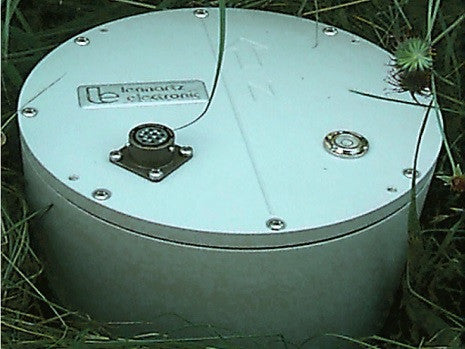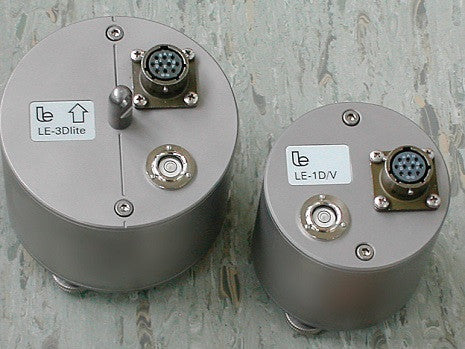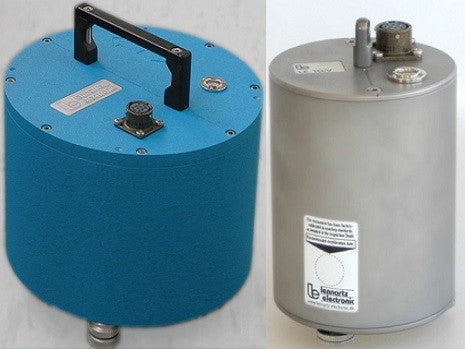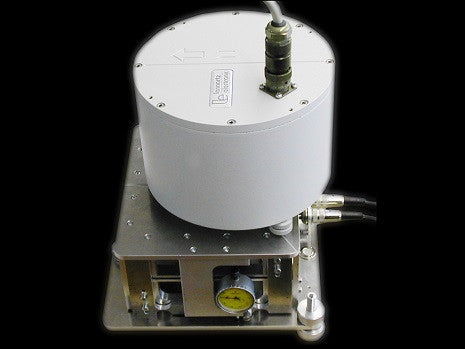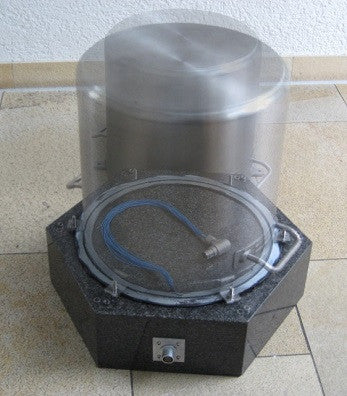LE-3D/20s: High Performance 0.05 Hz Seismometers
Supplied By: Lennartz Electronic, Germany
Rs. 0.00
The LE-3D/20s Seismometers:
The LE-3D/5s Seismometer
This is the latest addition to the product line, further boosting low frequency response down to 20 seconds. For those interested in “classical” regional earthquake seismology, or in the low frequency grumblings of volcanoes, this instrument fills a niche between short period and “real broadband”.
While physically identical to LE-3D/5s (except for the different paint colour), it is a fundamentally different instrument under the hood. In order to bring a physical 2 Hz electrodynamic geophone to behave like a 20 sec seismometer (remember those clumsy yet delicate beasts? You barely touched them, and the mass would shift out of whack!), considerable electronic wizardry needs to be applied

To some extent, this comes at a price – increased power consumption (but still within very reasonable limits). However, many of the qualities that have made Lennartz seismometers the practitioner’s favourite for more than a decade are present in this instrument. Compared to “true broadband” sensors, the most salient advantages are much faster startup time (the instrument will output meaningful results in less than a minute after power-up!) and drastically reduced sensitivity to temperature or pressure fluctuations. Since there is no physical long-period element inside, nothing will respond to daily temperature drift, or to the sudden air draught of a door being shut.
What "Real Broadband" installation entails?
“At minimum, it takes 500 man-hours to search, plan, travel, prefabricate, and install a site. If the distances are great, or construction is complex, the time requirement can easily go to 2000 man-hours. For example, we spent approximately 1500 man-hours on KCC (sited in an existing tunnel), 2000 man-hours on HOPS (because of vault construction), and we spent 1300 man-hours on FARB (our most inaccessible station).“
Basically, this means that unless you have that kind of time and resources to invest (and who does, especially in a mobile scenario??), you won’t get anywhere near the full data quality that a broadband sensor can theoretically deliver. So, the advantages of having a simple, easy to use, quickly up and running instrument may very well compensate for the fact that it isn’t a “true broadband” sensor.
If interested in learning more about what “real broadband” installation entails, click here.
Technical details for the LE-3D/20s Seismometers
| Technical Data for LE-3D/20s Seismometer | |
|---|---|
| Specifications: | LE-3D/20s |
| Power Supply: | 10…16 V DC, unstabilized |
| Power Consumption @ 12 V DC: | Average 50 mA @ 12 V DC; max. 100 mA (for full scale output) |
| Ouput Voltage: | 1000 V/m/s precisely adjusted on all components |
| Damping: | 0.707 critical (internal damping; independent of data-logger input resistance) |
| Dimensions: | 165x195 mm (HxØ) |
| Weight: | 6.5 Kg |
| Temperature Range: | -15…+60 °C |
| Housing: | Painted aluminium, splash proof, with level adjustment feet and water bubble level control |
| Eigenfrequency: | 0.05 Hz |
| Upper Corner Frequency | > 40 Hz |
| RMS Noise @ 1Hz: | <2 nm/s |
| Dynamic Range: | 136 dB |
| Poles | 3 poles: –0.222/+0.222j –0.222/–0.222j –0.23/0.000j |
| Zeroes: | Triple zero at the origin |
Related Products

